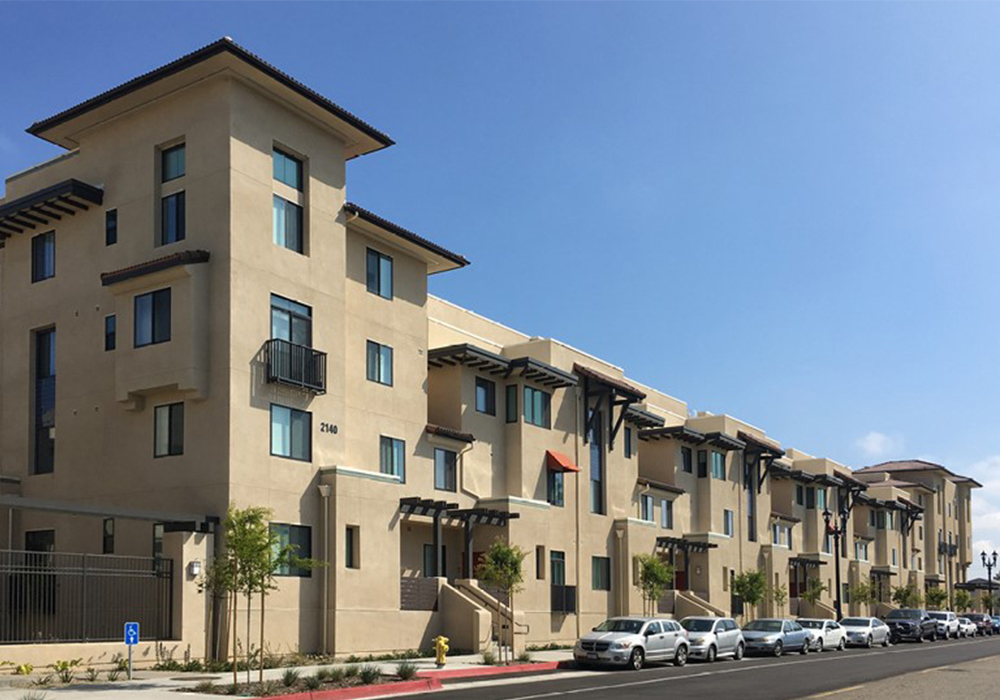National City, California
Carolina Martinez and the Paradise Creek Planning Partnership
2019 Advancing Diversity & Social Change in Honor of Paul Davidoff
Summary
Decades of conflicting land use regulations that mixed residential and industrial properties in the Old Town neighborhood of National City, California, created a toxic environment for residents, mainly low-income communities of color. With only two acres of park per 1,000 residents compared with the national average of 10 acres, the lack of open green space contributed to the poor health of Old Town's children. By 2005, residents sought solutions to end the conflicting land use policies that created a toxic living environment for their families.
Carolina Martinez, policy director at Environmental Health Coalition (EHC), assisted residents in developing a comprehensive plan to clean up the toxic environment and provide needed affordable housing near transit. The cornerstone of the project is the 201-unit LEED-Certified Paradise Creek affordable housing development that opened in 2016.
Process
Since the 1940s, industrial uses have been permitted in the Old Town neighborhood to drive economic development. Numerous auto-body shops, light manufacturing, and warehouses moved into the area, often operating too close to homes and schools. With a lack of quality affordable housing and open green space, the impact on the community was devastating. The Old Town neighborhood, which has the lowest income in San Diego County, also boasts one of the highest obesity rates among children, and nearly 14 percent of them suffer from asthma and other respiratory conditions.
National City's designation as a "disadvantaged community" by CalEnviroScreen made it eligible for targeted investments through the Greenhouse Gas Reduction Fund (GGRF). Martinez and other advocates lobbied the California State Assembly for a significant percentage of this fund to be dedicated to disadvantaged communities. With a $9.2 million GGRF grant, Paradise Creek was approved as an infill transit-oriented development in 2015. The nearly $90 million project includes park and trail expansion and a community garden.

Completion of the Paradise Creek residential complex brings 201 affordable rental homes and a public park while removing contamination and converting a city-owned brownfield property.
A community survey by EHC identified three critical priorities: construction of new affordable housing, relocation of auto-body shops to a heavy industrial area, and changing the zoning of Old Town to residential and residential-compatible land uses. Martinez, who emigrated to the U.S. from Colombia at the age of 14, advocated together with residents during the process and made sure that residents with limited English proficiency had input into the plan.

Diagram showing land use in West National City. Source: San Diego Geographic Information Systems; updated October 2003.
Results
Thirteen years in the making, the Paradise Creek Partnership is one of the largest and most significant developments in National City that has become a catalyst for neighborhood revitalization. With the help of Carolina Martinez and EHC, the Paradise Creek Apartments show how fiscal policy can achieve environmental justice by extending investments to the most disadvantaged communities. Most importantly, Paradise Creek demonstrates community-based planning at its best, with residents working together to create the community they want to live in.

Carolina Martinez was interviewed during a ribbon-cutting program for the Paradise Creek development on April 18, 2017.


